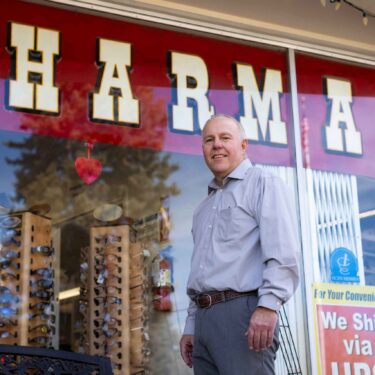The AP delivered an exclusive, multiformat deep data dive into the number of retail pharmacies across the U.S., which for the first time publicly ranked 49 states and Washington, D.C., for the number of pharmacies per capita, as well as an exclusive 44-state analysis at the ZIP code-level of pharmacies per capita in general and by race/ethnicity for Black, white and Latino populations.
Public health data journalist Kasturi Pananjady reached out to every state to obtain pharmacy license data. Her analysis provided a first-of-its-kind public ranking of pharmacy access per capita across the United States — a rich source from which the AP and its members can mine future stories. It also confirmed and deepened other researchers’ work on racial disparities in pharmacy access. Pananjady’s analysis directed the reporting process toward real-world examples, which culminated in three stories from Tom Murphy, Kenya Hunter and Devi Shastri; a video from Shelby Lum; and strong photography out of Cleveland and Basin, Wyoming.
Data visualization developer Koko Nakajima created a stunning visual representation of pharmacy access by ZIP code, which was central to the APNews.com presentation and embeddable for members.
This was the public health team’s first major project since its inception in 2023, and required immense collaboration across departments, including the data team — Pananjady, Angel Kastanis, Nicky Forster and others — Interactives and Health & Science. Additionally, Jen Lehman on the Local News Success team was instrumental in advance outreach to members and a Localize It guide, and Nancy Nussbaum’s Global Customer Communication team coordinated and moderated a webinar for members.
Visit AP.org to request a trial subscription to AP’s video, photo and text services.
For breaking news, visit apnews.com.



